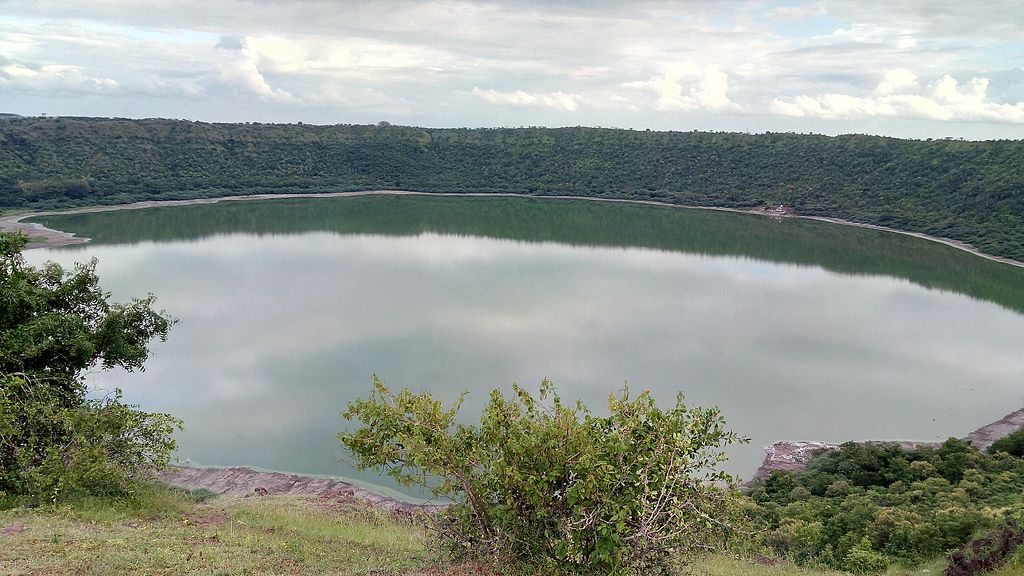
Losing our Lakes
by Revati Tongaonkar September 4 2017, 5:32 pm Estimated Reading Time: 2 mins, 22 secsLonar Lake in Maharashtra is rapidly shrinking in size, researchers have found. The lake, situated in the Buldhana district near Amravati in central India, has recorded a decrease in its circumference, with the periphery of the lake moving in almost a hundred metres inwards in just the last three years.
The saline lake, whose mean diametre is almost 1.2 kilometres, was formed approximately 50,000 years ago, in what is known as the 'Upper Paleolithic Era', when a stray meteorite collided with the Earth's surface. Today, the lake is a notified National Geo-Heritage Monument, and was being studied by the Centre for Citizen Science (CCS) in Pune, who were the ones to report the shrinkage.

The CCS has been studying the lake since 2003, along with scientists from the Inter University Centre for Astronomy and Astrophysics (IUCAA) in Pune, the National Centre for Radio Astrophysics, and the Indian Meteorological Department, and it has attracted scientists from all over the world as well, being the only hyper velocity impact crater in basaltic rock on the planet. Today, the lake, and the area around it have become popular tourist hubs, with people coming to spend time at the waterfront, and visit a Chalukya-Era temple nearby.
Mayuresh Prabhune, who led the team of researchers from CCS, provided some reasons why the shrinkage might have occurred. "There are several bore wells less than 100 metres from the crater’s rim. Lonar crater is an eco-sensitive zone, but there are food joints and bore wells nearby,” he said. “Collective impact of these activities is that water supply to the lake is decreasing. With extensive diversion of water, the lake’s storage has declined sharply. The CCS also studied rainfall pattern in the area since 2003 and noticed that there has been no significant change in the precipitation levels.”
The study reported that "... reduction in water level is a combined result of drying up of (nearby) percolation dam and the closure of streams (which flow) into the lake." Such fluctuations and rapid changes in the water body are harmful for biodiversity, and ought to be a cause for concern for the authorities. The lake is a unique and thriving ecosystem, home to a range of flora and fauna. Resident and migratory birds, such as black-winged stilts, brahminy ducks, grebes, shelducks, shovellers, teals, herons, lapwings, blue jays, larks, tailor birds, robins and swallows are found around the lake, among several others. The area is also home to several monitor lizards, peafowl, chinkara (deer) and gazelles.
Yogesh Shouche, microbiologist and CCS President suggested that the government frame a special policy for its conservation, but neglect seems to be the order of the day. Sudhakar Bugdane, a member of the state government appointed Lonar Lake Conservation Commiittee, said that the Centre last year shrunk the Eco-Sensitive Zone around the lake to 100 metres from 500 metres before.




-173X130.jpg)
-173X130.jpg)
-173X130.jpg)
-173X130.jpg)
-173X130.jpg)
_(1)-173X130.jpg)

-173X130.jpg)